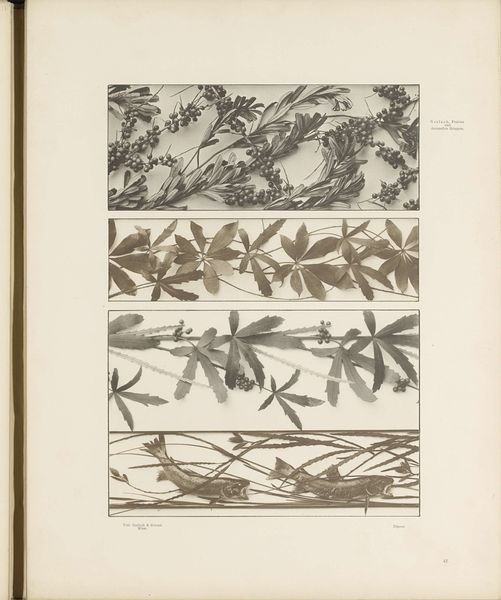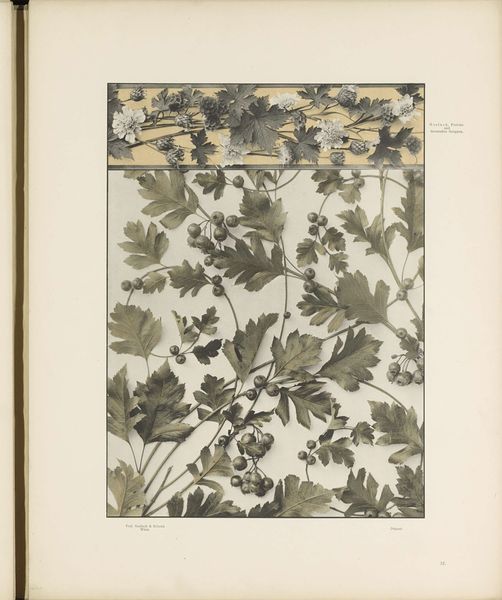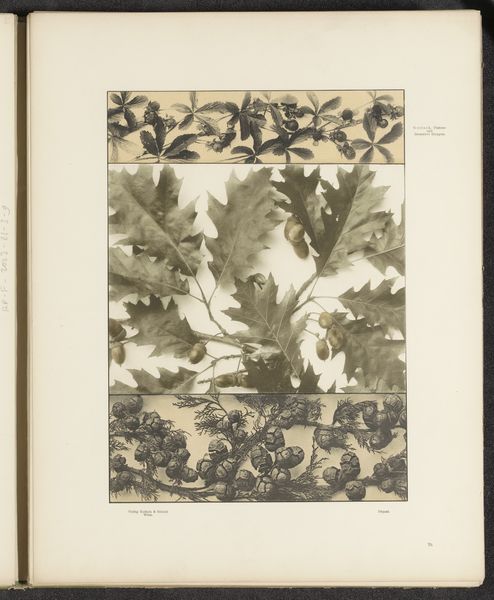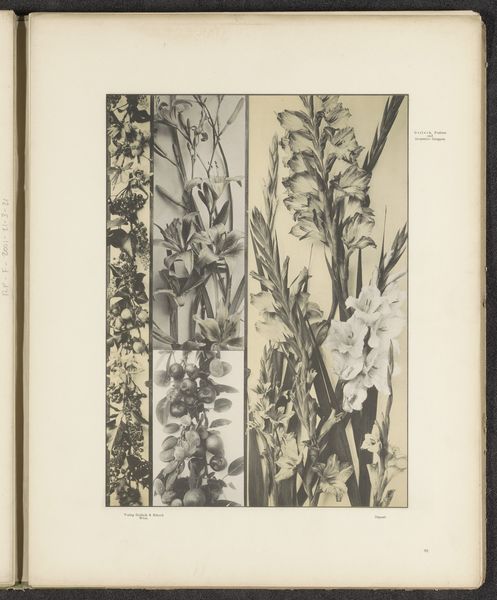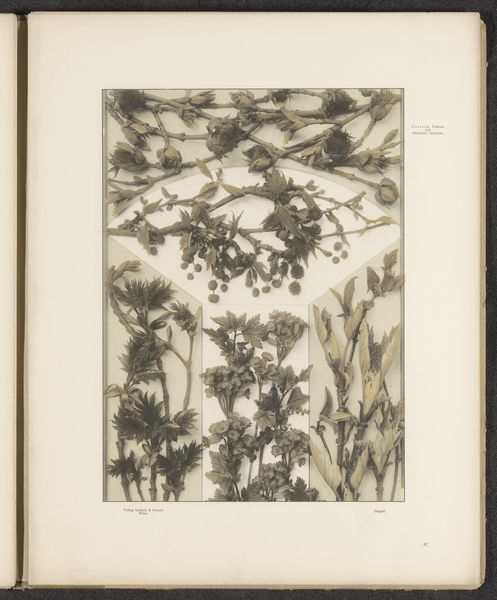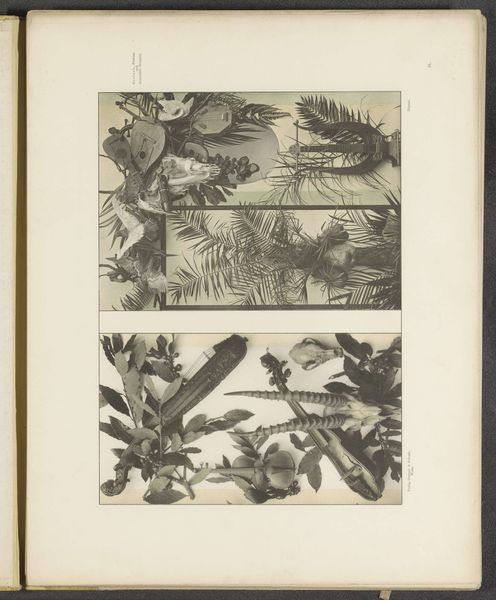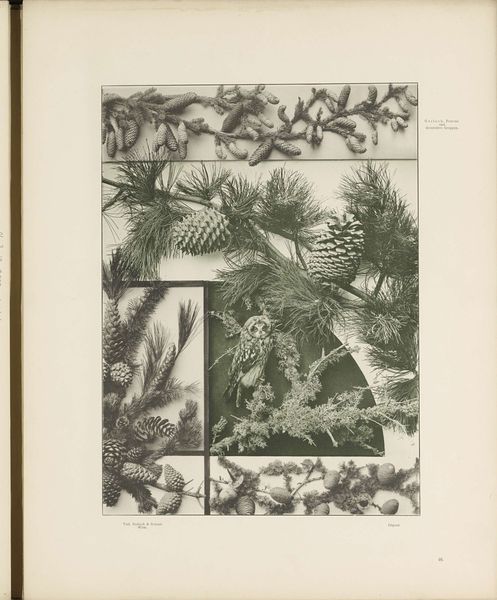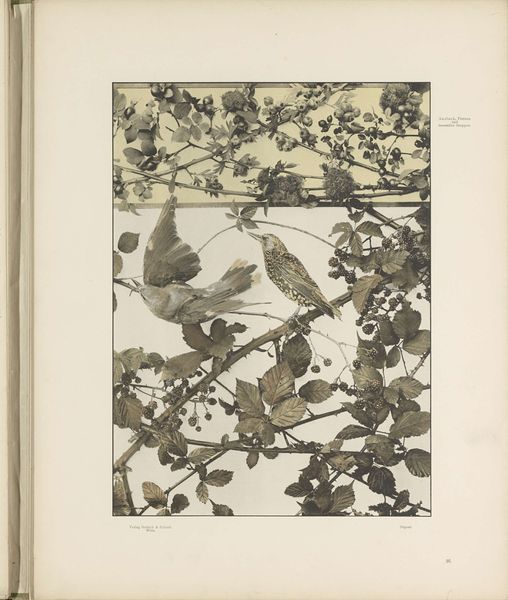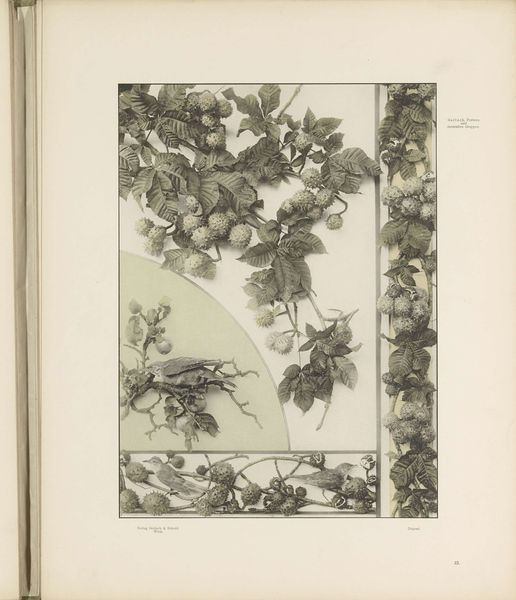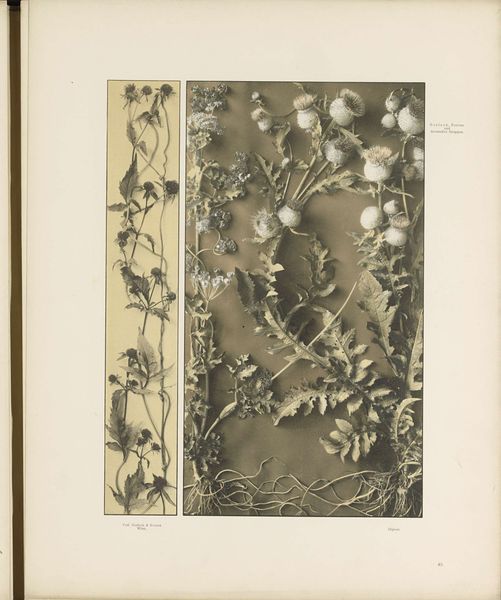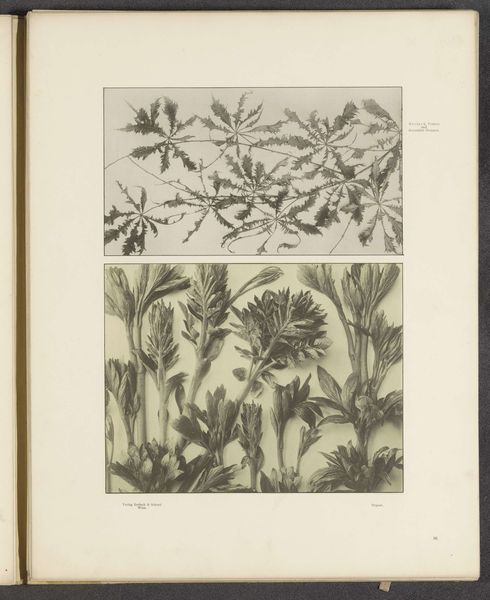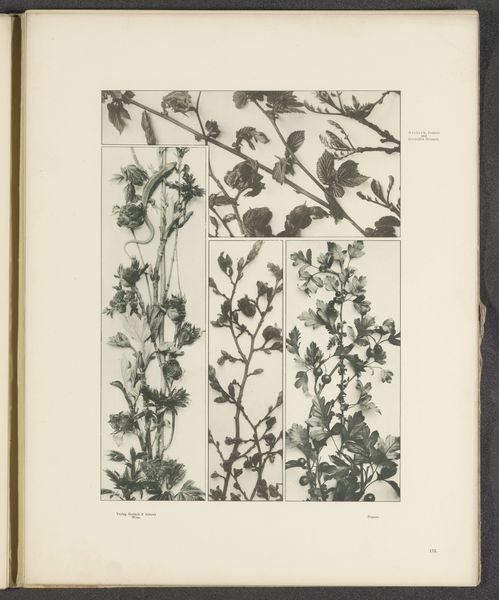
lithograph, print, paper, photography
#
toned paper
#
lithograph
# print
#
paper
#
photography
#
watercolor
Dimensions: height 293 mm, width 214 mm
Copyright: Rijks Museum: Open Domain
Curator: This artwork, "Vlakvullingen van weegbree en bladeren," translating to "Plane Fillings of Plantain and Leaves," is believed to originate before 1897. It combines photography, watercolor, and lithography printed on toned paper. What is your immediate response to it? Editor: A very still, quiet beauty. It feels almost like pressed botanical specimens, neatly organized, yet hinting at the wildness they once possessed. The limited color palette contributes to a sense of muted, timeless observation. Curator: Indeed. Considering the combination of techniques used— photography as a recording device, watercolor to infuse subtle hues, and lithography for mass production—I see it as a fascinating intersection of art and industry. What labor went into collecting these specimens, arranging them, and translating them through different mediums? Editor: That's interesting. My mind goes to the social implications, to accessibility and representation. Who was this created for, and who had the privilege to study such meticulously documented natural forms? What about the social hierarchies embedded in the very act of collecting and classifying? It evokes a Victorian-era sensibility. Curator: Precisely. We are witnessing a convergence of scientific inquiry, artistic skill, and nascent industrial capabilities. Think of the paper itself; its texture, its potential origin from specific mills—it all informs our understanding of material conditions at the time. It pushes against the traditional boundaries of high art by spotlighting processes typically deemed mundane. Editor: And beyond just processes, I think of power structures—of colonizers studying and documenting the flora of colonized lands. There’s a parallel here, of imposing a visual order and understanding on something inherently resistant to it, like attempting to encapsulate the natural world within the constraints of a frame. Curator: A poignant perspective. Examining the production and material conditions indeed prompts us to recognize these embedded social dynamics. The creation becomes not just an artistic achievement but a social artifact worthy of investigation. Editor: Absolutely, viewing the work through a social lens allows us to excavate deeper meaning from what at first glance seems a straightforward nature study. Thanks to a critical examination of gender, race, and politics in conjunction with materials, the viewer finds themselves grappling with difficult questions about nature and exploitation. Curator: A truly multi-layered approach to understanding art's significance! Editor: Yes, definitely helps to unpack historical moments of inequality in artwork today.
Comments
No comments
Be the first to comment and join the conversation on the ultimate creative platform.
